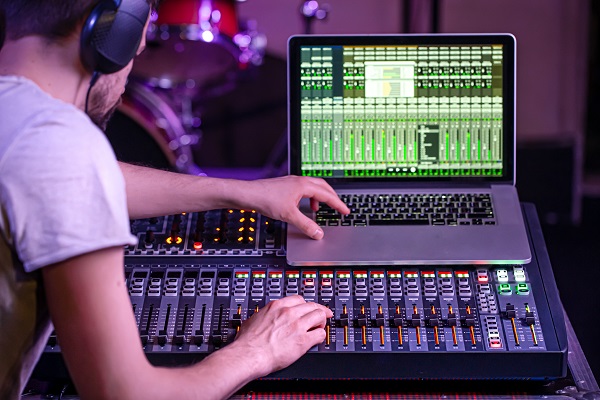
Are you a musician looking to make your sound stand out? Audio mixing is the key to taking your music to the next level. With the right tools and techniques, you can transform your recordings into a professional-sounding masterpiece.
In this article, you'll explore the history, multitrack, DAWs, techniques, and importance of audio mixing.
Get ready to take your music to the next level!
Definition
Audio mixing is the art of blending individual audio elements of a recording to create a balanced and pleasing sound. This is done by adjusting levels, panning, adding effects, and automating. It requires a lot of training and experience to get it right, but the benefits are worth it.
In the hands of a skilled professional, a mix can be taken to new heights with clarity, conciseness, and precision. Music mixing is essential for achieving a polished and professional sounding product. It adds value to the final product and makes it radio-ready.
The right mix can enhance the emotion of a song and captivate listeners.
History
Building on the foundation of recording technology, audio mixing has evolved over time into the art form it is today.
From recording on cylinders to disks, then tape, and from mono to stereo to multitrack, advancements in technology have enabled mixers to create a new sonic reality.
Multitrack recording allows for individual performers to fix mistakes and add more lines to a music performance, and digital audio workstations (DAWs) have replaced multitrack tape machines and analog consoles.
Mixing engineers in the past dealt with few tracks, but now they often mix over 100.
The goal of mixing is to transmit the message of a song and enhance its emotions, and the evolution of sound mixing has made this possible.
Multitrack
Multitrack recording allows individual performers to play at separate times, enabling the addition of multiple lines like extra guitars or voices. It also allows for fixing mistakes of individual performers rather than the whole band.
Mixing engineers in the past worked with a few tracks, but now it's common to mix over 100.
The benefits of multitrack recording are clear: it allows for more control over each track, more flexibility to fix mistakes, and the ability to create new sonic realities. The result is improved recordings and the potential for a powerful mix.
DAWs
You're likely familiar with Digital Audio Workstations, or DAWs, which are commonly used in sound mixing today. Replacing the analog consoles and multitrack tape machines of the past, they offer a range of advantages, including convenience and flexibility.
DAWs contain simulations of multitrack tape machines, processing gear, virtual instruments, and powerful mixing consoles. Through automation, settings can be recalled from any mix. There's been a debate about the comparison between analog consoles and DAWs, but most people agree that DAWs provide better quality. They also allow for a greater range of effects and can produce better mixes than analog consoles.
Ultimately, DAWs are the standard mixing platform, providing an efficient and cost-effective way to create professional-sounding recordings.
Techniques
Mixing techniques involve adjusting levels, panning, and adding effects to bring out the best in a recording.
Level adjustment is essential to balancing the relative loudness of different instruments.
Panning refers to placing sounds in the stereo field, while surround sound adds depth to the mix.
Effects like reverberation, delay, and compression can also be added.
Automation techniques like programming panning, fades, and other effects are used to create variations.
Advanced mixing involves using EQ to clean up frequencies, stereo imaging to create the illusion of sounds, and muting techniques to remove unwanted noise.
Professional mixing requires knowledge of the tools and techniques to master the perfect mix.
If you need more guidance, don't hesitate to check out https://youraudiofix.com/ - a great source of music knowledge.
Importance
Building on the importance of mixing techniques, it's crucial to understand why audio mixing is important.
Professional mixing ensures high-quality audio and makes it radio-ready. A mixing engineer knows how to bring out the best in each instrument, eliminating muddiness and creating clarity.
The benefits of professional mixing add value to the final product. It requires training and experience to properly execute, making it stand out and captivate listeners. Adding effects such as compression and reverb enhances the song, while balancing pre-recorded track levels is a part of mixing.
Audio mixing is essential for a successful recording.
Conclusion
Audio mixing is an art form and a technical craft that can take your music to the next level. With the right tools, techniques, and a bit of creativity, you can transform your recordings from average to stellar.
Even if you don't have a lot of experience, you can learn the basics of audio mixing and use them to create a unique sound that will make your music stand out.
So start mixing and take your music to the next level!
